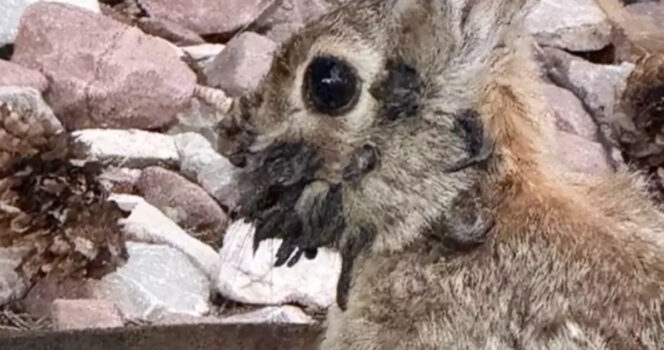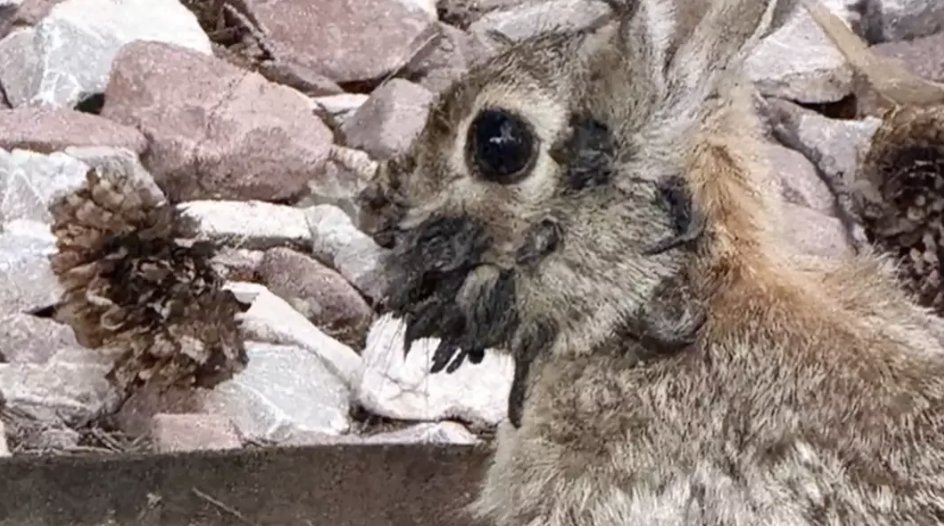
Residents of Fort Collins, Colorado, have been spotting wild rabbits with grotesque facial growths that look like something straight out of a horror story. Local photographs reveal bunnies with what appear to be dark, stubby tentacles emerging from their heads, prompting both shock and fascination online.
But this isn’t a scene from Stranger Things. Wildlife experts say the phenomenon is caused by the cottontail rabbit papilloma virus (CRPV), a condition that produces benign tumors on rabbits’ heads. Some historians believe this virus may have even inspired the legendary ‘jackalope’ myth (rabbits with antlers) over time.
Colorado Parks and Wildlife (CPW) has issued guidance following the sightings. While CRPV is not considered contagious to humans or other animals, anyone encountering infected rabbits is advised to avoid contact entirely.
According to Eyewitness News 3, the virus spreads primarily through mosquitoes and ticks that bite infected rabbits, rather than direct rabbit-to-rabbit transmission, meaning these unsettling ‘Frankenstein’ rabbits could appear elsewhere in the Midwest.
The virus begins with red, raised spots on a rabbit’s skin that evolve into wart-like growths. In some cases, these warts develop into black tendrils around the mouth, eyes, and cheeks. Though usually benign, some lesions can eventually turn into life-threatening skin cancers.
Fort Collins resident Susan Mansfield described her unsettling encounter with one of the infected rabbits to WLBT3: “It looked like black quills or black toothpicks sticking out all around its mouth. I thought it would die off during the winter, but it didn’t. It came back a second year, and it had grown even more.”

Veterinarians warn domestic rabbit owners to protect their pets from mosquito bites. If an infection occurs, surgical removal of the tumors can prevent malignancy. Wild rabbits, however, face grim prospects. As the growths enlarge, they can obstruct the rabbit’s vision, hearing, and ability to eat, often leading to starvation.
In other bizarre wildlife news, some parasitic fungi have captured public imagination; most famously the ophiocordyceps unilateralis, the so-called “zombie-ant fungus” that kills insects and takes over their bodies, the National Geographic explains. Some species, such as Cordyceps militaris (the “Scarlet Caterpillarclub”), are harvested for traditional medicine or culinary use, with claimed (but unverified) health benefits. Experts caution that the zombie-ant variety is not safe for human consumption.
For now, CRPV-infected rabbits remain a striking, eerie reminder of how strange and unforgiving nature can be, right in Fort Collins’ backyards.
READ MORE
- 14-month-old lioness brutally declawed in zoo so that visitors can play with her
- Circus lion released after being locked up for 20 years




